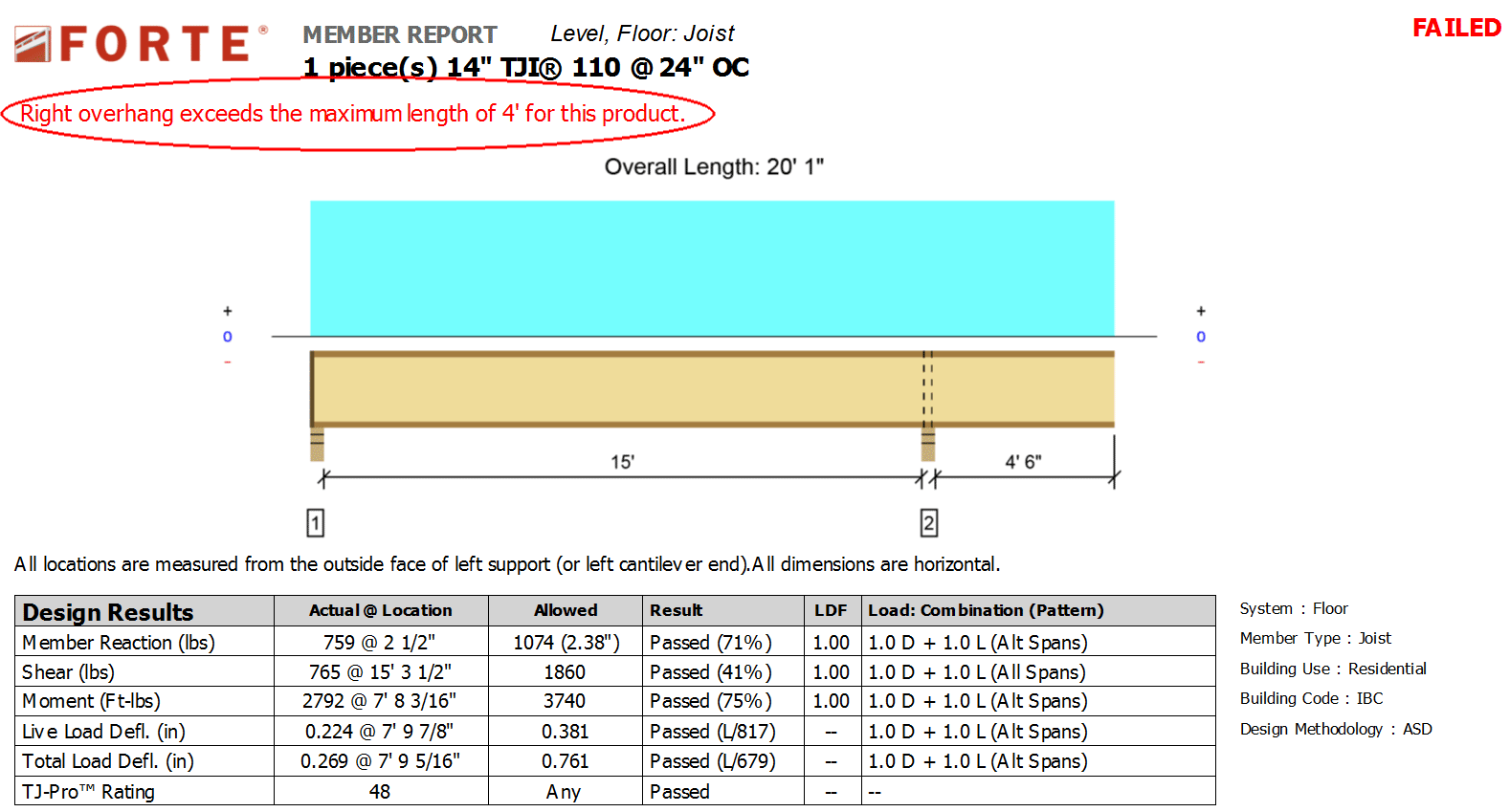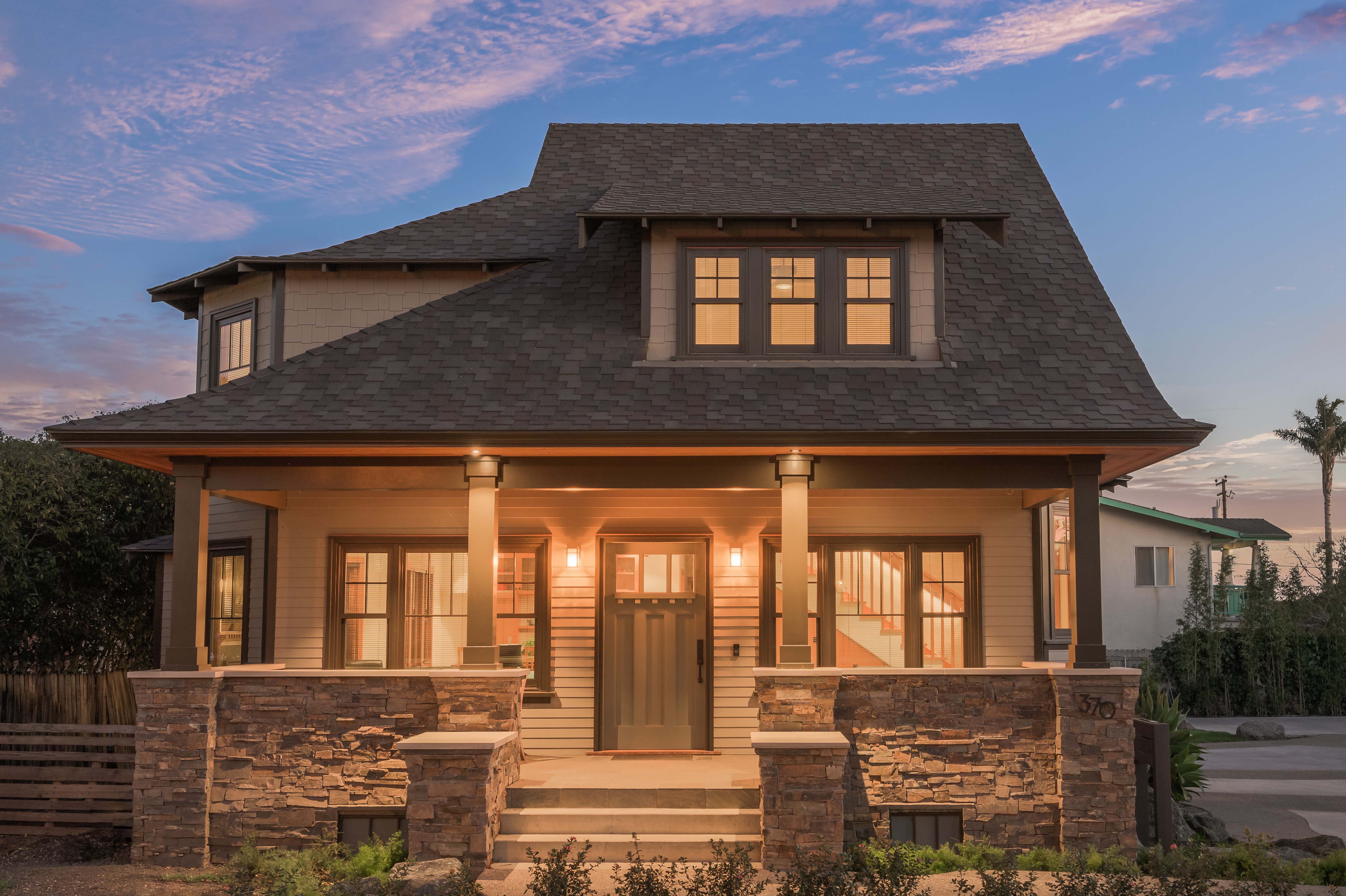
By Elson Wang
Forte® software provided by Weyerhaeuser has preset maximum cantilever lengths for all products available in the software. When you exceed these limits, Forte® will produce a warning error as shown in the calculation above.
All slender structural members (such as TJI®s, structural composite lumber and dimension lumber) require bracing along their compression edges to prevent lateral-torsional buckling. For typical simple span members, the compression edge would be along the top, where the attached floor sheathing would provide the lateral bracing.
When a member has a cantilevered end, significant compression forces will be act along the bottom edge of the flange, both on the back span and on the cantilever itself. Our testing and research determined compression along the back span may require extra lateral bracing for the bottom chord. Furthermore, during construction the members may not be adequately braced and see higher loads than anticipated. Loading cantilevered member with construction material prior to adequately bracing the bottom edge (both back span and cantilever), may create a potential safety hazard.
Forte® addresses this potential issue with a maximum cantilever limit for each product type as well as analyzing if the bottom flange requires bracing. These maximum cantilever limits and bracing requirements were developed based on a construction loading criteria determined by applying a uniform load along the member with a superimposed construction point load at the end of the cantilever and then determining the maximum allowable unbraced length for the member. The maximum cantilever limit is set to prevent the buckling of the cantilever’s compression edge during construction. In some scenarios, the software will also trigger bracing requirement in the back span portion of the joist based on loading, configuration and joist type. Acceptable bracing consists of gypsum ceiling, full-depth blocking or bottom chord strapping at the third points of the back span.
Other Forte® cantilever length limitationsForte® also limits the length of the cantilever based on the ratio of the spans of the member as seen in the example calculation below. The purpose of this check is to prevent a short back span in relation to the cantilever length. A relatively short back span will result in a ‘teeter totter’ effect that may cause structural and serviceability issues with the member.

Typically, a long back span will help provide the counterweight that balances the cantilever. Not having this counterweight from a long back span, a short back span may create uplift at the back span bearing opposite of the cantilever end. These uplift forces need to be considered for proper design of connections such as hangers and strapping/tie downs.
Uplift force may also cause upward deflection on the member. In a floor system, this upward deflection could result in things such as a floor hump which may lead to a poor perception of the floor system. Furthermore, the short back span can also affect the dynamic performance of the cantilever. The teeter totter effect may cause a cantilever in a floor system to feel bouncy and unstable when occupied.
Blocking requirements for Cantilevers
TJI® joist cantilevers require full depth blocking at the cantilever bearing. The cantilever blocking provides lateral stability due to potential high compressive stresses in the bottom flange which cannot be resisted by the nails from the flange to the bearing below. The cantilever blocking also provides a lateral load path from the walls at the end of the cantilever down to the bearing walls below.
Exceeding Forte® Limitations
When designing for cantilevers that exceed the set limitations in Forte®, the designer or engineer of record’s considerations should include, but not be limited to, the actual unbraced length of the cantilever, the geometry of the structural member, loading, and the ability to provide proper bracing (both temporary and permanent along with the timing of the installation of the bracing system).
You can download Forte®, our single member sizing software, for free here: weyerhaeuser.com/forte.
If you have any questions regarding Forte® or Trus Joist® products used in a cantilever application, please contact your Trus Joist® representative, call our technical support team at 888-453-8358 or email techsupport@weyerhaeuser.com.
Elson Wang

Elson Wang is a Product Support Engineer based out of Dallas, TX. He graduated from the University of Texas at Austin in 2012 with B.S.Architectural Engineering and B.A. in architecture, and is currently pursuing a M.S. Civil Engineering at Southern Methodist University. During his 2 years with Weyerhaeuser, Elson has been providing technical support for the south central market.


